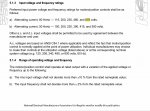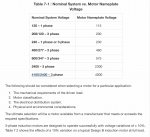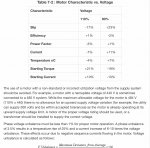pjones
Member
- Location
- Vancouver Canada BC
I have a piece of equipment that is rated for 575 VAC but is receiving 618v that fluctuates a bit for momentary instances at most from what I’ve seen. The piece of equipment is a large HVAC unit. The largest spike I’ve seen go to it was 633v (just barely over 10% of 575 v).
If I understand correct I can have a maximum of 10% deviation from the 575v rating but just wanted to make sure I had that correct.
Can someone please either confirm this if it’s correct or clarify if I’m misunderstanding an aspect of it somewhere?
Thanks.
Sent from my iPhone using Tapatalk
If I understand correct I can have a maximum of 10% deviation from the 575v rating but just wanted to make sure I had that correct.
Can someone please either confirm this if it’s correct or clarify if I’m misunderstanding an aspect of it somewhere?
Thanks.
Sent from my iPhone using Tapatalk




